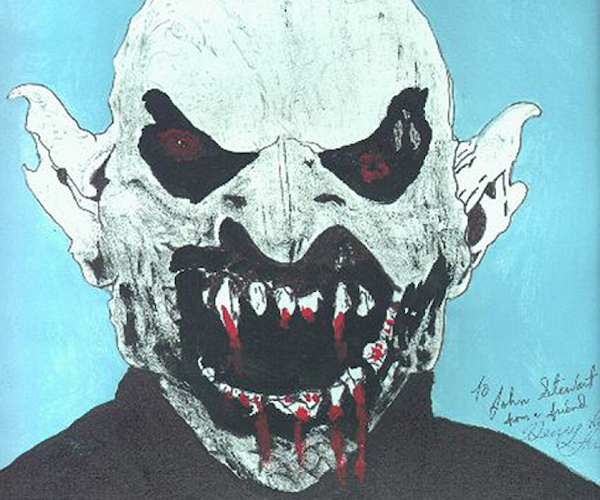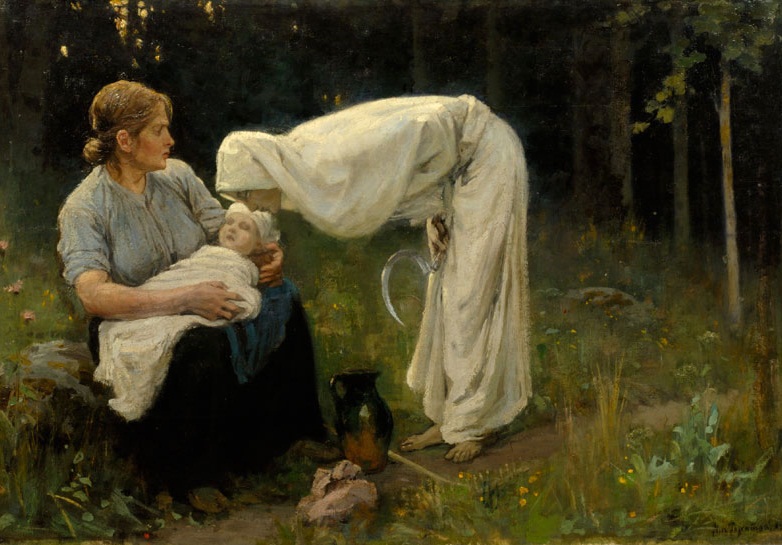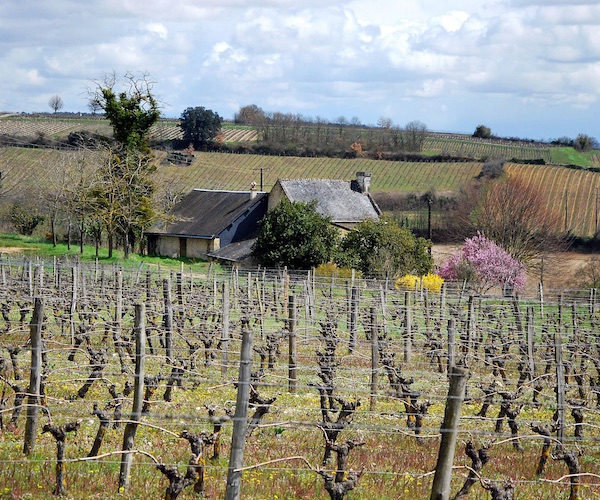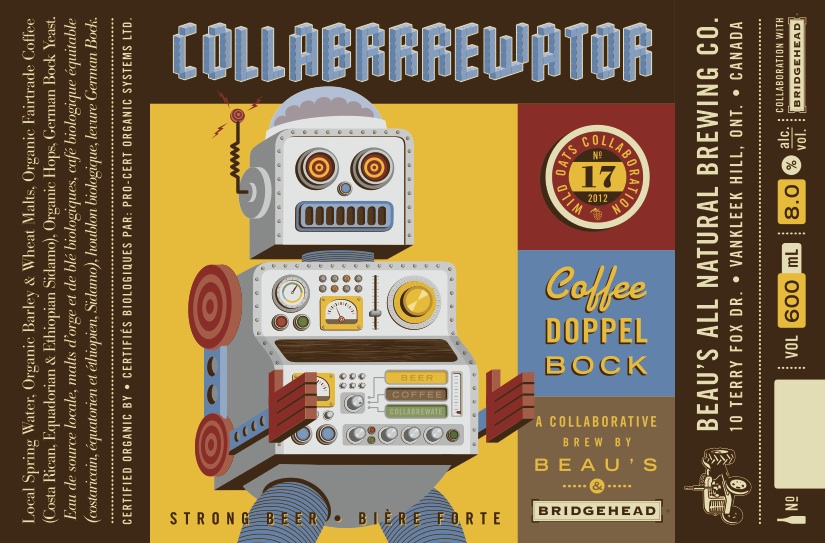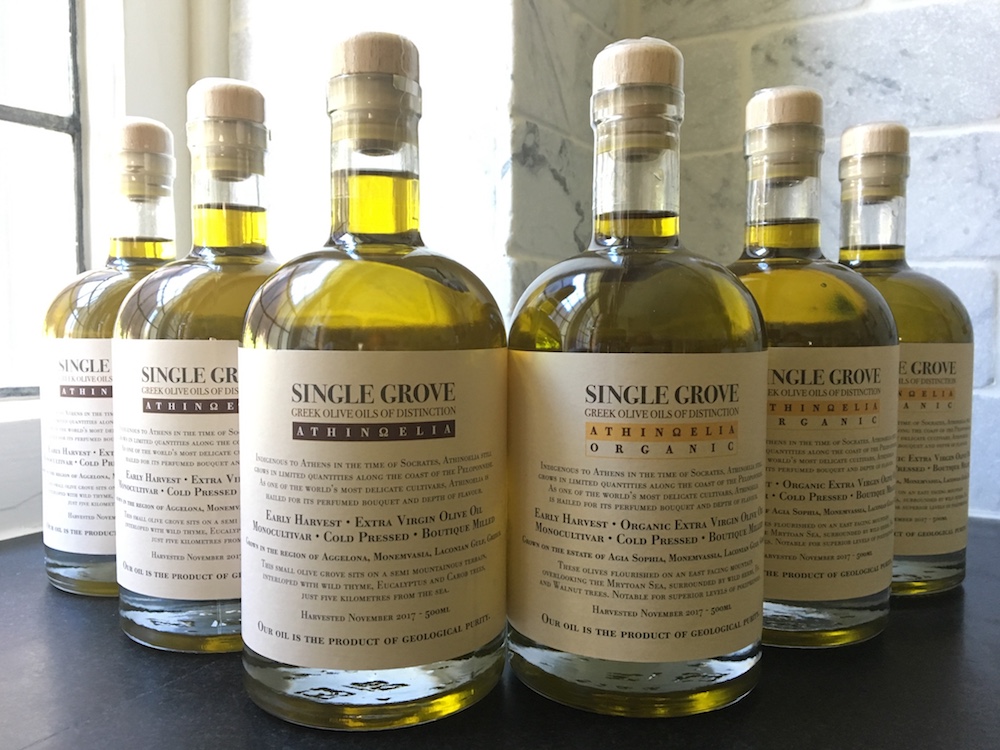Lorette C. Luzajic’s Halloween edition of her series Wine and Art is Five Artists Who Will Scare the Living Daylights Out of You (and what wine to drink with the ghouls).
It’s Thriller time again, when kids and big kids alike love a good scare. Millions are flocking to cemeteries to celebrate Day of the Dead, and millions more are donning vampire or ghost personas, or dancing with the devil just for tonight. Cozy pumpkin spice season is a great time to watch some classic horror films, but art history’s horror can ignite your imagination, too.
Settle in with a nice cellar of art books… and a library of wine, and prepare to tremble…
Albert Pinkham Ryder
American painter Albert Ryder Pinkham was most active in the late 1800s, when moody and dark land and seascapes were in vogue. The Tonalist painters and those influenced by them liked to defy artists’ usual obsession with colour and create in layers of brown, gray, and green-black. Ryder’s works were also influenced by poetry and opera so they tended to pique the curiousity of the audience with that layer of mystery or suggested narrative. But by and large, if Ryder had never painted his grim rider, it’s likely we’d have forgotten him by now.
Death on a Pale Horse (The Race Track), pictured above, simply shows the pale rider nonchalantly wielding his scythe as the silent hoofbeats pound the night. A wary snake under the rickety fence glowers at you. All is silent.
Death riding a pale horse is an archetypal image that first appeared in the Book of Revelation, and is a frequent subject through art history (J.M.W. Turner, Benjamin West, Gustav Dore, Jean Michel Basquiat…) This particular manifestation symbolized the multi-millenial old story, but it was also inspired by a more personal encounter. The artist met a waiter at the pub who had bet all of his meagre savings on a horse. When his horse came in third., the young man shot himself.
For Ryder, in his own words, “this fact formed a cloud over my mind that I could not throw off, and The Race Track is the result.”
It’s a simple painting but its effect somehow lingers across a century. You too, after all, are racing in that very direction on that same pale horse.
Pair with: It’s not hard to picture some Edgar Allen Poe type props in this picture, and this bottle of Wicked White VQA is coming up ravens. The Raven Conspiracy, made by Niagara’s Peller Estates, is cold comfort, fresh with leaves and apples and sweet, too. Since you’re going to die anyways, trick or treat yourself to a few mouthfuls of sugar. The horse will like this too, and if you give him enough, maybe he’ll lose track and veer off course.
Janis Rozentals
Janis Rozentals was a sublime painter of Latvia that too few outside Easter Europe have heard of. He painted village scenes or landscapes with human drama, whether suggested narratives of ordinary life or scenes from myth. He had a penchant for pastel colours and light that gave them a kind of soft, fuzzy impressionist veneer, and even the most ordinary of scenes had a dreamy quality.
The Black Snake painting stands out as a rare dark and frightening work, depicting a monstrous old hag in a storm on the sea, clutching at a rock . She is naked from the torso up, like a mermaid, but she is not a siren: she is half snake, not fish. The mythological woman-snake creature from the Greeks was called an Echidna.
But it is another painting that puts a permanent frost in your bones, even with the summer setting. In the lush green woods, a woman sits on a perch holding a swaddled infant. And bent over that infant is a mysterious figure in white from head to naked toe, holding a sickle, bent over to gaze with hunger at the child.
In Latvian mythology, the beautiful and hideous Velu Mate is the mother of death. She is also manifest as Kapu Mate, or mother of cemeteries, and lurks nearby to escort you there.
Drink: You’ll need a stiff one to ward off the inevitable a while longer while you contemplate it through this fascinating painting. It’s not easy to find Latvian wine, but if you’re heading up to the 57th parallel, you’ll find the Guinness Book Record farthest-north vineyard in the world.
To which I have to say, well, there’s vodka.
Henry Lee Lucas
Henry Lee Lucas wanted desperately to be one of the great serial killers of all time, but of his boasted hundreds of murders, only a few were proven. At his death, many were stamped “solved” to close the cases, but the confessions were inconsistent and details were all mixed up, so few of his claims to fame were truly resolved. Though he said a teenage girl who rebuffed him was his first, his first proven victim was his own mother.
Lucas’s matricidal rage was not entirely a mystery: mother was a sex worker with a sadistic streak who made him watch. His initial claims that he killed her in self defence might ring hollow, but then again, she was extremely abusive and was beating him with a broom. He grabbed a knife and the rest is history.
His father was a drunk who had lost both his legs in a railroad incident, and then froze to death after passing out in a blizzard on the way home from the bar.
And if it’s all fun and games until somebody loses an eye, well, Henry did lose one, to a childhood infection that went untreated thanks to parental neglect.
The pencil crayon drawings he did in prison, and on death row, are creepy as hell. Dracula, twisted clowns, and assorted monsters. If it’s possible to completely hollow out a child’s soul, and replace it with evil, well, then, Henry Lee Lucifer is the spawn of Satan, and his drawings leave a kind of visual testament of hell.
Down it with: the devil. Chile’s Casillero del Diablo Reserva Devil’s Collection Red will fortify you with ruby fruit and chocolate with just a hint of fire and spice.
Théodore Géricault
French painter Theodore Gericault had only a few short years before tuberculosis killed him at 32. But he worked furiously and produced a body of work that showed a rigorous classical discipline as well as a kind of obsession for the recurring themes that haunts art and literature: man’s struggle against nature, and man’s heart of darkness.
The most ambitious and famous work he left behind was The Raft of the Medusa, a stunning and brutal painting depicting a current event of his time. At 16×23 feet, it is a massive painting on a massive topic. In 1816, there was a French shipwreck of the Medusa off the coast of Mauritania; the captain abandoned the rest, leaving 150 people on a raft where they died one by one adrift at sea for two weeks, fighting and cannibalizing each other, until only 15 survivors were rescued.
The painting was derided by the idiot tastemakers of the day, who called the work “a pile of corpses” without any insight into the brilliance and courage the young man had undertaken.
The epic painting is harrowing, but its real story was behind the scenes, showing up in the sketches and notes the painter made about the process. There are quite a few macabre smaller paintings of severed feet and limbs, or decapitated heads that had rolled away from the guillotine. Gericault borrowed these gruesome props from local morgues and asylums in order to study seriously the anatomy of death, putrefaction, and decay. He kept the gory still life in his studio while they rotted, rearranging them and sketching furiously.
With a masterwork as epic as Raft of the Medusa, one has to concede there was a method to his madness.
Nonetheless, you’ll need something strong to mask the stench of death…and something French. And it should be intelligent, too, because you’re looking at one of the greatest paintings in history.
Pair with: Château Saint-Germain Bordeaux Superieur AOC Bordeaux. It’s simple, smart, sturdy, and has a slow burn to keep you afloat.
Zdzislaw Beksinski
By all accounts, Zdzislaw Beksinski was a mild mannered, humble, quiet, affable guy with a swift sense of humour. He didn’t like fanfare or crowds, so he didn’t even attend his own art exhibitions. Despite no formal study of art, he was a modern old master, with the kind of technical painting and draughtsmanship skills and innate ability to enchant as all of the greatest of his predecessors.
But all of Beksinski’s art is terrifying. Each work contemplates the various forms and personifications that spirits or demons might take on, or imagines the most apocalyptic evil in human history. Like an unholy chorus of Ray Bradbury, Bosch, and Goya, the works draw on mythology, dark ritual, nightmares, fantasy, and tragedy like famine, plague, and war. It was a dystopian surrealism that could be described as the anatomy of human fear.
He is grossly underrated, but history will raise him. up. I was lucky to see some of Beksinski’s magnificent art in an exhibition of horror Guillermo Del Toro’s personal art collection. Del Toro, who gets these things, said of Beksinski’s art, “They hold within them a secret poetry, stained with blood and rust.”
Zdzislaw’s life narrative is bookended by the themes that fuelled his imagination and work. He lived through the horrors of Soviet communism and world war in Poland, witness to atrocity and its aftermath. Life took a welcome mellow and quiet turn that allowed the great artist to work in peace until he neared the end. Then, Beksinski’s son unexpectedly committed suicide, leaving his body for Pops to find, a tragedy that was still fresh when the artist himself was stabbed to death in his own home.
He had refused to give a teenage hooligan money, and the old man was ruthlessly hacked to death in revenge. Trick or treat, indeed.
Toast: You should toast the great Zdzislaw Beksinski and his poetry of blood and rust, and Polish wine would be fitting but hard to find. Poland drinks among the least wine per capita in the world, although that situation is resolving itself as we speak. In the last couple of decades, trendy wine bars have been popping open all over the place and wine consumption and production is moving upwards exponentially. The cooler climate is challenging to major viniculture, but when there’s a will, there’s a way, and some interesting wines are emerging through use of quick ripening grapes that work well with a shorter warm season.
Since you may not be going to Poland anytime soon, head to their neighbour’s shelf at the liquor store and select a German Gewürztraminer, just because it’s even harder to pronounce or spell than Zdzislaw Beksinski. The Germans were famously obsessed with demons and devils and skeletons and other Beksinski themes, so it’s a good fit.
I’m voting for Darting Dürkheimer Nonnengarten Gewürztraminer Kabinett 2015 Gewürztraminer. It’s thick with fresh cut herbs, cinnamon, and an insane amount of sugar, enough to give you nightmares where hollow eyed feral things skitter up fences and red eyes glare out from under piles of bones. It’s a trip you should take.
Happy Halloween!
Visit artist Lorette C. Luzajic’s website mixedupmedia.ca, and see all of her GFR Wine and Art series here.

